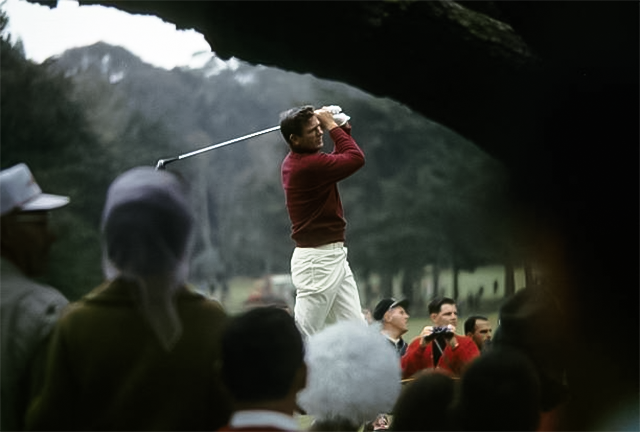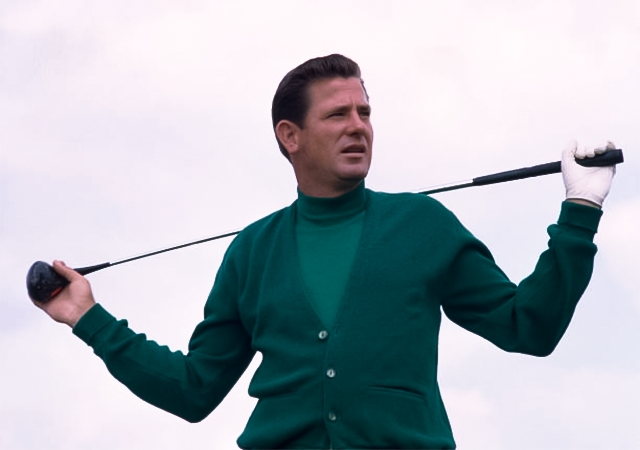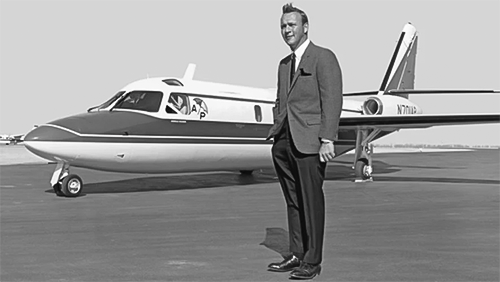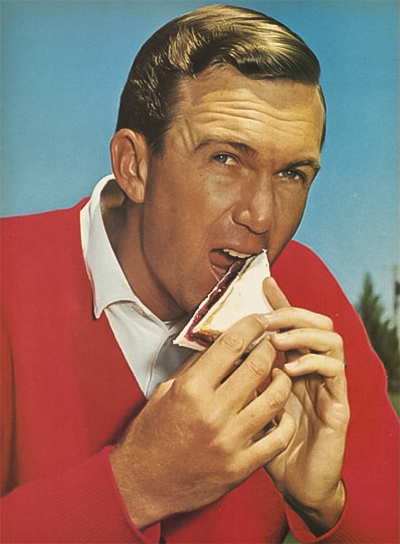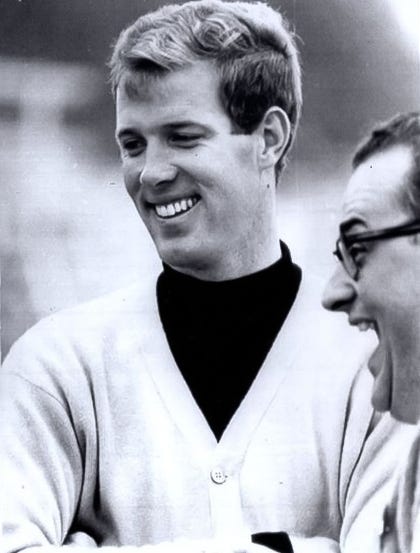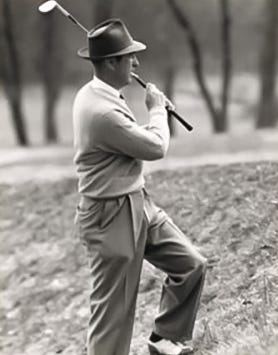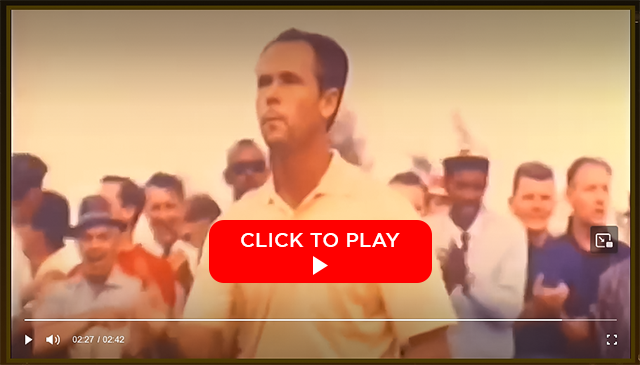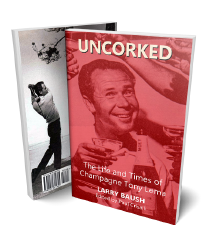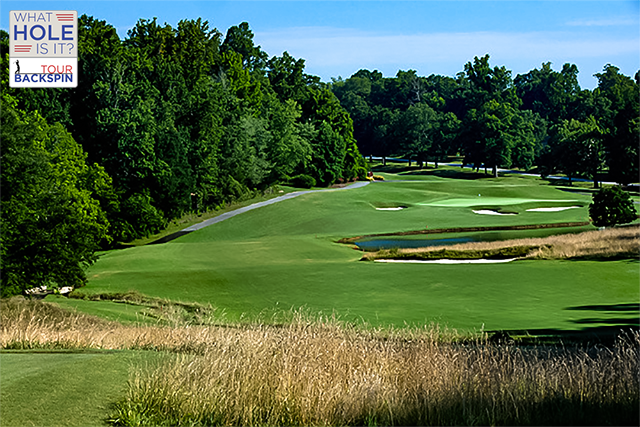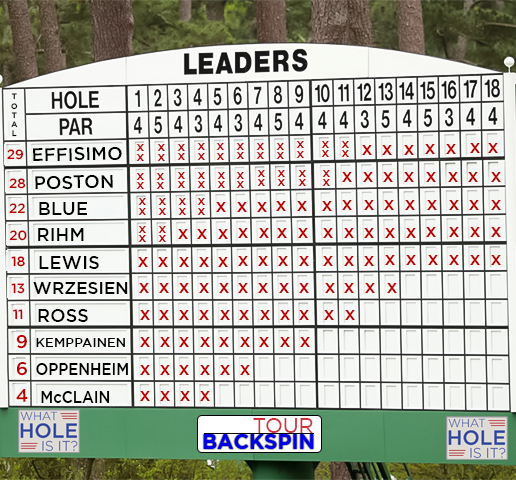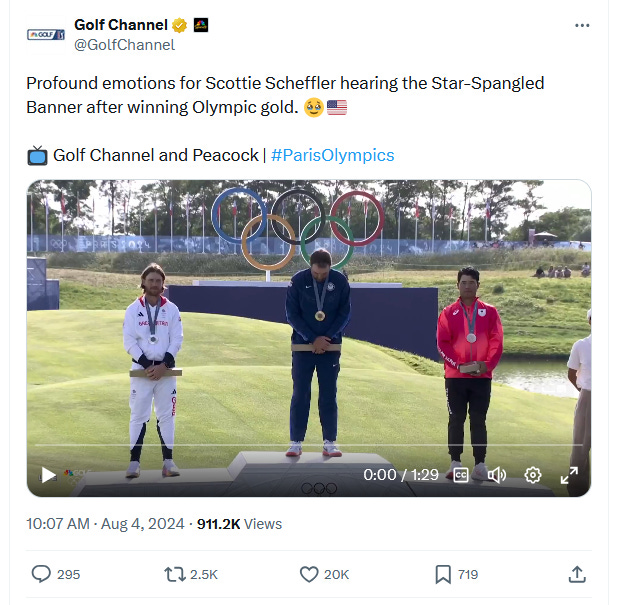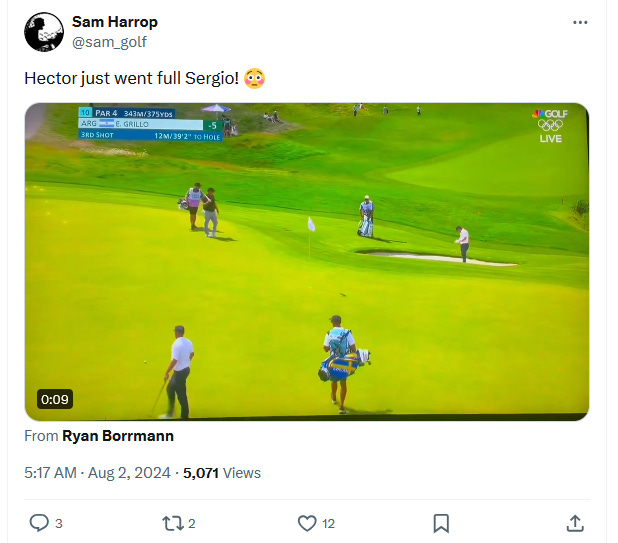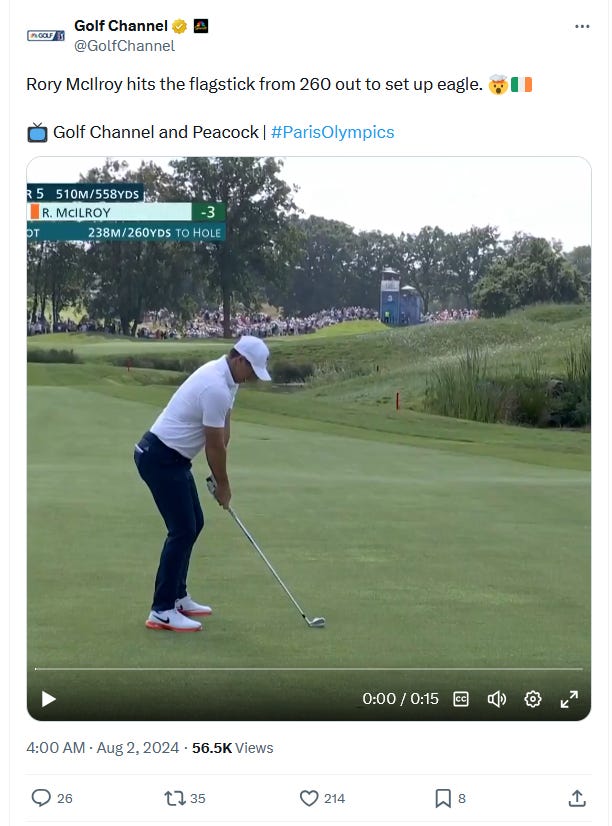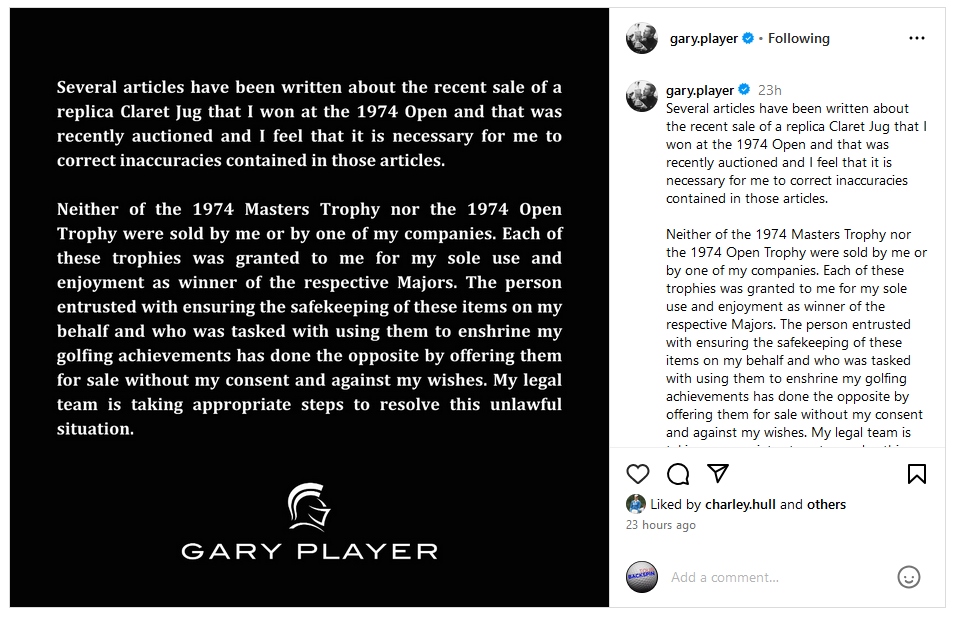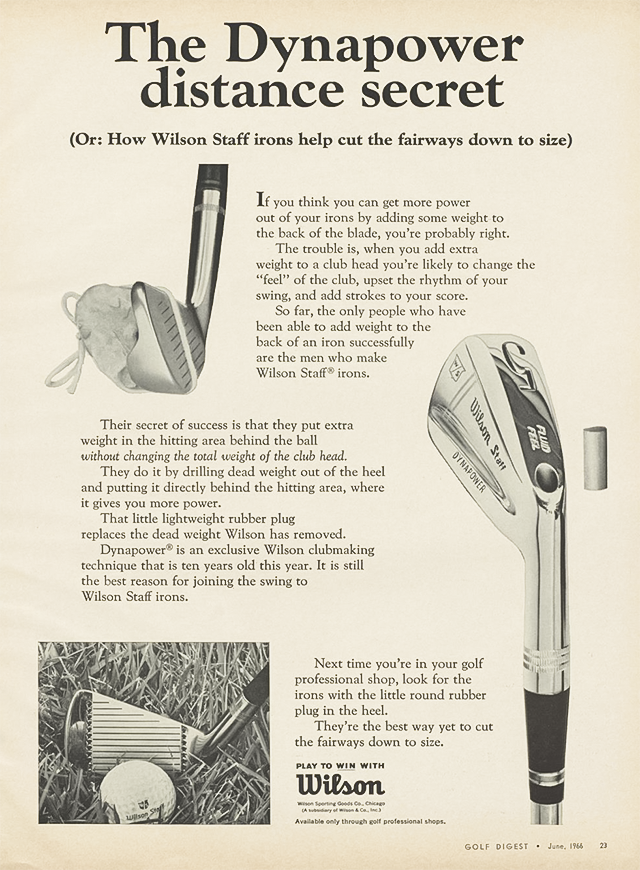Join us on our journey through the past as we take you inside the ropes at the 1966 Greater Greensboro Open won by Doug Sanders. This is the seventh oldest tournament on the PGA TOUR as it dates back to 1938 when Sam Snead won the first of his eight GGO titles. It is now known as the Wyndham Championship and it is played on the same course that was used in the 1960s, and most of the 1970s. Scroll down to learn more.
I don’t think I’ve ever used a headline that was about the Bonus Story, but this one is so good, I couldn’t resist. Be sure to check it out.
We’ve written about the 1971 GGO won by Buddy Allin HERE, and the 1967 event, won by George Archer HERE and the 1978 event won by Seve Ballesteros HERE.
We wrap-up the Men’s Olympics golf, which just may have been the best back nine in men’s professional golf this year. Congratulations Scottie Scheffler. The Player of the Year award just got even more interesting, if that’s possible. Scroll down to read and view the Clips You Might Have Missed.
Let us know how you handle the pin in, pin out on the green in the Tour Backspin Poll, and this week’s Music Clip features a perfect summer song, especially here in the PNW where it’s hotter than a matchstick. The Lovin’ Spoonful performs “Summer in the City” live on TV (more like lipsynced) in 1966. Scroll down to listen. We highlight Doug Sanders’ swing in this week’s Swing Like a Pro feature. You should be able to figure out the WHAT HOLE IS IT? Presented by Rota Golf this week and then you may just win a golf swag prize pack (we’ve got new swag!). Rota Golf has a cool way to map out your bucket list journey of playing the top 100 courses in the U.S. We’ve got some links for you in the Check it Out section and an ad that shows one of my favorite iron models in this week’s Vintage Ad. Scroll down to view.
In last week’s Tour Backspin Poll we were pleasantly surprised that the list of players we provided for you to pick the gold medal winner from actually finished up near the top. There were 27% of respondents who were correct in their pick of Scotty Scheffler to win. Xander Schauffele was picked by 55%, McIlroy garnered 9% of the total votes, the field came in with 9% of the votes, and Tour Backspin readers knew there was something up with Jon Rahm because nobody picked him to win gold.
This week we ask you how you handle the pin in, or pin out, on the putting green?
Tour Backspin Poll
Do you know what happened today in golf history? Or which famous golfer has a birthday today? Me, neither. But I do know where to go to find out. Check out the Your Golfer’s Almanac podcast. Host Michael Duranko celebrates birthdays, milestones, and other accomplishments that occurred on this day in golf history. Listen HERE.
We’re playing Greater Greensboro Open Trivia in this week’s Tour Backspin Quiz. Scroll down to play.
Did you miss a previous newsletter? You can view it HERE. Help us grow Tour Backspin! Please forward this email to a friend. Was this newsletter forwarded to you? You can sign up HERE.
Okay, we're on the tee, let's get going.
Enjoy!
Larry Baush
Sanders Wins Greater Greensboro Open in Two-Hole Playoff
It is the third week of March 1966 and young Tom Weiskopf is on the practice tee at the Citrus Open in Orlando. He is struggling to find something that will help him turn his golf game around. He is clearly discouraged, and Doug Sanders notices the second-year pro and wanders over to watch him hit balls. After a swing, or two, Sanders offers a couple of tips.
Weiskopf thanks Sanders for his help, but he continues to struggle and withdraws from the tournament after the first round. He then heads back to his hometown of Bedford, OH to continue to work on his game. He skipped the tour stop in Jacksonville which was won by Doug Sanders for his second win of the season. The next week, Weiskopf was a late entry into the Greater Greensboro Open and successfully qualified on Monday to get into the field.
“It took only 35 minutes to fly down from home. And we messed around a little up there.”
“I was out practicing one day at Orlando,” Weiskopf later told reporters at Greensboro. “Doug came over and told me a couple of things that he thought I was doing wrong. The more I thought about what Doug had advised me, I knew he was right. I worked on it back home.”
Arnold Palmer was entered into the event and, thanks to a new Rockwell Jet Commander plane he recently acquired, made his arrival in Greensboro on Tuesday in time for a practice round. The GGO was being played at the Sedgefield Country Club which measured 7,029-yards and played to a par of 71, and the purse was $100,000 with $20,000 going to the winner. It had been an unusually warm and dry spring, and the course was playing hard and firm.
“It took only 35 minutes to fly down from home,” Palmer bragged to reporters upon his arrival. “And we messed around a little up there.”
Palmer and comedian Bob Newhart were the key figures at the sponsor’s banquet at the Plantation Club on Tuesday night. Palmer received a $1,000 check for the Buddy Worsham Memorial Scholarship at Wake Forest College. Worsham was Palmer’s roommate at Wake Forest who was killed in a car crash. Newhart entertained the crowd with his stand-up comedy routine.
The next day, the two teed it up together in the pro-am where Palmer shot a 63 to take the low pro honors. Doug Sanders finished second with a 66, while George Archer’s team won the team competition with a 55.
With the preliminaries completed, it was time to start the tournament on Thursday morning. Both Palmer and Sanders had early tee times with Palmer going off at 8:18 from the first tee, and Sanders, also starting at the first tee, was set to go at 8:34. Eight-time GGO champion, Sam Snead, was starting at the 10th tee at 8:10. Tom Weiskopf had a 12:42 tee time and he was starting at the first hole.
A record number of fans, 9,000, flocked to Sedgefield to watch the first-round action under bright blue skies, but chilly temperatures. Despite feeling the effects of a cold, and the clicking of camera shutters, Sanders kept his fine play that he had displayed over the past few months going and recorded a 65 with a front nine 32 and a back nine 33.
Later in the afternoon, Al Geiberger posted a 33-33—66 that included a chip-in on the 9th hole for an eagle. Geiberger did not have his wife along for this stop on the tour and he didn’t have time to make one of his trademark peanut butter and jelly sandwiches and had to rely on a brownie for his mid-round energy booster.
Snead posted a one-over 36 on the back nine after beginning his round at the 10th hole, but then he turned it on for his back nine. He nearly aced the the 3rd hole, his 12th hole, and then birdied four holes in a row starting at the 6th hole to finish with a 67.
The lesson that Tom Weikopf received from Sanders seemed to be working as he was able to post a 68. Palmer could not match the heroics from the previous day when he shot a 63 and recorded a 71.
“I rolled it to the green and dropped a 20-footer. It looked like I was going to shake hands with a five and wound up with a birdie.”
Sanders arrived for his second round clad in tangerine slacks and shoes with a black shirt. He started on the back nine and birdied his second hole, the 11th.
“I was lucky to get that birdie on number 11,” Sanders told Earle Hellen of The Greensboro Record. “I drove the ball too far and it rolled into a hazard but lucky for me, there was a sewer which interfered with my stance, so I got a free drop. I rolled it to the green and dropped a 20-footer. It looked like I was going to shake hands with a five and wound up with a birdie.”
Sanders finished with a 70 for a two-round total of 135 and a share of the lead along with Tom Weiskopf. Weiskopf played flawlessly hitting all 18 greens in regulation, recording four birdies for a round of 67.
“The one thing I have concentrated on this year is being consistent from tee to green,” Weiskopf said after his round. “The putting will come but if I know I can play consistent from tee to green then I think I have a good chance.”
Al Geiberger recorded 15 pars, one bogey, and two birdies to post a one-under 70 and sat one shot behind the leaders at 136. Three players were tied at 137, R.H. Sikes, Dave Ragan, and Steve Reid. Sam Snead was another stroke back, tied with Terry Dill, Terry Wilcox, and Howie Johnson. Palmer shot a second straight 71 and was far down the leaderboard.
By the third round, Sedgefield had grown crispy under the sunshine and windy conditions and Smith Barrier, sports editor of the Greensboro Daily News described the course as “parched.” There was one young player, R.H. Sikes, who was not intimidated by the conditions as he easily navigated the course on his way to a 68 and sole possession of the lead at 205.
“All I’ve got to do is remember to sign my scorecard Sunday.”
“I had an easy round,” he said. “Drove the ball well, hit the greens, and had some good, long putts. They didn’t fall in, but they were good ones. Very easy.”
Sikes was attempting to play his way into the Masters being played the week after the GGO. He led in the points list from the winter tour with the two top point earners being rewarded with an invitation to Augusta. Sikes led Phil Rodgers by nine points, George Archer by 13, and Joe Campbell by 14 as the week began.
“All I’ve got to do is remember to sign my scorecard Sunday,” he joked to Barrier of the Daily News.
Weiskopf admitted that his goal was to play par golf on Saturday and that’s just what he did. His even par round put him at 206, one shot behind Sikes.
He told reporters after his round, “I am all keyed up, and I don’t want to be. I kept telling myself to play par golf, that would be okay in the conditions of this course today. We went off late in the day, everything was dried out. That bird at seven helped settle me, and on the back side I had some good iron shots. I didn’t get many birdie putts, but I made a lot of good putts for pars.”
He also made a good putt for a bogey at the treacherous par-3 16th hole. The 16th was causing all kinds of trouble for the players blowing up scorecards. Weiskopf made a long putt to save his bogey. But he also missed an eight-foot putt at the final hole that would have given him a share of the lead.
“It was a bad putt all the way. I simply mishit it. It never had a chance.”
“I walk onto the 18th green and see that eight-foot putt, and, man, I want to make it so bad,” Weiskopf said. “You see, Sikes and I roomed together when we started the tour, and I would just like to be leading this GGO with him.”
He was disgusted with the putt.
“It was a bad putt all the way. I simply mishit it. It never had a chance.”
The 16th hole reared its ugly head again when Geiberger took a double bogey that put him three strokes behind Sikes. A bogey at the next hole dropped him to four shots off Sikes’ lead.
“I hit a miserable shot into the creek to the left there,” Geiberger said to Gene Warren of the Greensboro News and Record.
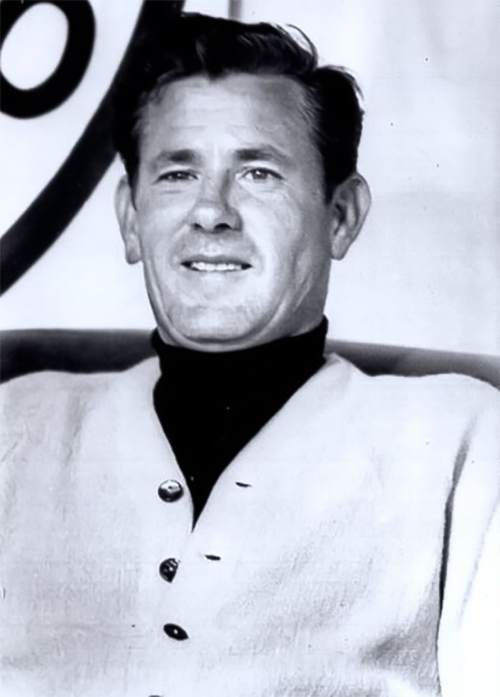
Sanders was dressed all in red for the third round and admitted after the round that he wasn’t driving the ball too well.
“I hit a fat 3-iron, and it rolled over that concrete bridge to the green.”
“I don’t know what it is,” he said. “I think I’ve got in the habit of keeping the ball low in the fairway and let it roll, and as hard as this ground is, it will roll forever.”
Sanders birdied the 5th and 9th holes and made the turn with a two-under 34, but then ran into trouble on the back nine. He almost knocked his ball out of bounds at the 13th on his approach shot, got too greedy at the 14th hole, and put his approach shot into a bunker on the 15th hole. He went bogey, par, bogey on those holes before playing the dangerous 16th hole. He played that hole in an unconventional manner.
“I hit a fat 3-iron, and it rolled over that concrete bridge to the green,” he related.
He two-putted for his par and finished with an even par 71, tied with Weiskopf one stroke off of Sikes’ lead.
Palmer shot a 68 moving up the leaderboard to 210, five shots off the lead and Snead blew to a 76 and fell down the leaderboard precipitously.
“Playing this course depends on position, much more than on distance.”
Sanders dragged Phil Rodgers to the practice tee on Saturday afternoon. He was looking for some pointers to help him hit his drives higher.
In Sunday’s final round, the practice session with Rodgers paid off for Sanders who was able to position his drives to give him the best chance to hit greens.
“This is my kind of course,” Sanders told John Cathey, sportswriter for The Greensboro Record. “It’s narrow and this kind of course can play best because of the premium on accuracy. Playing this course depends on position, much more than on distance.”
Weiskopf teed off in the group in front of Sanders and got off to a nervous start with bogeys on the 2nd and 3rd holes. He came back with birdies on the par-5 6th and par-5 9th, both times hitting the green in two and two-putting. He made the turn in even par and then he birdied the 14th hole, gave that stroke right back at the 15th hole with a bogey, and birdied the 17th hole.
“I knew that Tom had caught me then. I felt I had to sink that putt, or I was in deep trouble.”
He faced an 18-foot putt for birdie at the final hole, but narrowly missed it. After signing his card for a one-under-par 70, he watched Sanders play the final hole from the side of the green.
Sanders birdied the 6th and 7th holes and made the turn two-under before making a bogey at the 15th hole. At the dreaded 16th hole, he overshot the green and then chipped up to six feet from the hole. He then heard a roar go up from the crowd around the 17th green.
“I knew that Tom had caught me then,” Sanders said after his round. “I felt I had to sink that putt, or I was in deep trouble.”
Sanders secured his par on the 17th hole and then came to the final hole needing a birdie to win, a par to force a playoff. His approach shot came up short, but he nearly chipped in to win in regulation. He tapped in for his par and he and Weiskopf were driven out to the 15th hole to start the sudden-death playoff. The last playoff in the Greater Greensboro Open was in 1963 when Sanders lost to Julius Boros.
Both players nearly birdied the 15th hole with Sanders lipping out a chip shot and Weiskopf missed a 10-foot putt by three inches. The players moved on to the dangerous 16th hole. Most of the record crowd had already assembled around the par-3 green figuring that the playoff would be decided there.
Both players missed the green with Sanders hitting his shot into a bunker where he hit a fantastic explosion shot to five feet. Weiskopf hit an indifferent chip to ten feet and would putt for his par first. After Weiskopf missed his putt, Sanders stroked in his five-footer for the win. Sanders became the third player, after Sam Snead and Byron Nelson, in the 29-year history of the GGO, to win the title more than once. He won his first GGO title in 1963.
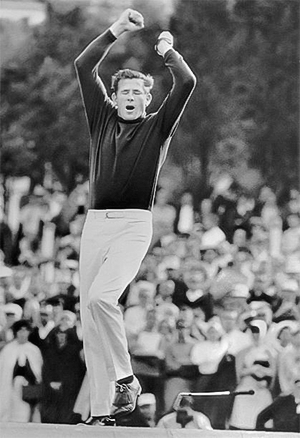
The press room featured a large green chair for players to sit in while being interviewed post round. The chair had been dubbed, “The Throne.” As Weiskopf and Sanders were ushered into the press room after the playoff, Sanders plopped down on the edge of the raised platform, next to the disappointed Weiskopf.
“There are no kings or queens here,” he declared. “I feel like I belong right here with Tom. I told Tom coming back from the 16th that he was going to win a lot of tournaments and not take this loss too badly.”
Sanders gave all the credit to his practice session with Phil Rodgers that helped him with his driving.
“By working with Phil, who I think is the best technical man on tour, I was able to get the ball a little higher,” he said. “I was able to get the ball to the green a little better and I have real confidence in my putting these days.
Sanders credited a driving range tip he received from Phil Rodgers for helping him win the Greater Greensboro Open. But it was a driving range tip that he himself gave to Tom Weiskopf a couple of weeks prior at the Citrus Open in Orlando that almost cost him a title at the Greater Greensboro Open.
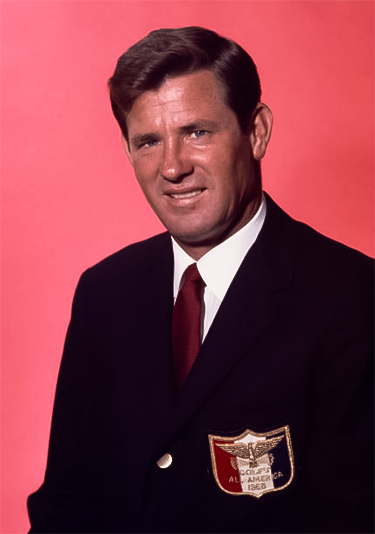
BONUS STORY
Charlie Farlow, a local teaching pro who qualified to play in the Greater Greensboro Open, had an interesting start to his second round. He read in the paper that he was teeing off the 10th tee, but that information was incorrect. When he arrived at the course, he was told that things were backed up and his 11:30 tee time would now go off at noon.
At six minutes to noon, he moved from the practice putting green and headed towards the 10th tee to begin his round. Upon arriving at the tee, he was informed by an official that he was supposed to be teeing off on the first tee.
“I hurried to the first tee, and the other members of my threesome (Larry Laoretti and Johnny Johnston) had already gone,” Farlow explained to Gene Warren of the Greensboro Daily News. “George Walsh, the PGA tournament official, blasted me out for being late. He told me if I didn’t go off immediately, I’d be disqualified.”
So, he teed the ball and continued to wait for his caddie, but Walsh informed him he had to hit his drive, or he would be disqualified.
“So, I hit with what I had. I hit with a putter and was lucky the ball bounced across the ditch,” he said. “I reached the ball and waited for my caddie. Walsh yelled that I had to go ahead and play without him. So, I hit the putter again. My caddie got to me so I could hit a 2-iron on my next shot, but I topped the ball of all things.”
Walsh had also told Farlow to be sure to tell the scorekeeper to add two shots to his score, the penalty for showing up late to a tee time. He wound up with an eight on the hole, including the penalty strokes.
Farlow shot a 71, quite extraordinary considering the circumstances. His two-round total was 149, two shots above the cut line.
Farlow served 40 months in the Army during World War II as a member of General George Patton’s tank division. Farlow, who passed away in 1979 at the age of 70, was inducted into the Carolinas PGA Hall of Fame in 1993.
We have some exciting news about the progress being made on the documentary movie based on my book about Tony Lema. We’ll be updating the news in upcoming editions of Tour Backspin. We now have a website that features a trailer. Check it out by clicking on the clip below.
This biography of Tony Lema is one of the best golf books out there. Great research and writing. Highly recommended!
Bill via Instagram
What Hole is It? powered by Rota Golf. Doesn’t your bucket list journey deserve one of these?
WHAT HOLE IS IT?
Are you on the leader board?
Congratulations to Mike Kemppainen, who correctly identified #2, at Le Golf National in Guyancourt, France (Albatros Course) in last week’s WHAT HOLE IS IT? contest. Mike beat out six other correct answers in the random drawing. We’re sending a prize pack of golf swag, including new stickers, to Mike. Submit your answer for this week and get yourself into the race for the Herbert C. Leeds Trophy, our new perpetual trophy for the annual winner.
The latest episode of The Tour Backspin Show has dropped on YouTube for all subscribers. Our annual paid subscribers have had access to this podcast that features Lee Trevino receiving the Legacy Award from the Robert Trent Jones Society, and discussing his illustrious career. Early access to The Tour Backspin Show is one of the benefits of being a paid subscriber to Tour Backspin. Feel free to share this with your golf buddies.
Tour Backspin is a reader-supported publication. To receive new posts and support my work, consider becoming a free or paid subscriber. Paid subscribers help fund the research that bring these stories from the past to you.
We understand if a premium subscription isn’t in the budget, and we’re happy to have you here however you’ve arrived. You can sign up for a free subscription so you’ll never miss the newsletter. It will arrive in your inbox every Thursday. Paid subscribers help fund the work we do here at Tour Backspin.
PGA TOUR Wrap-Up | The Olymipics Men’s Golf
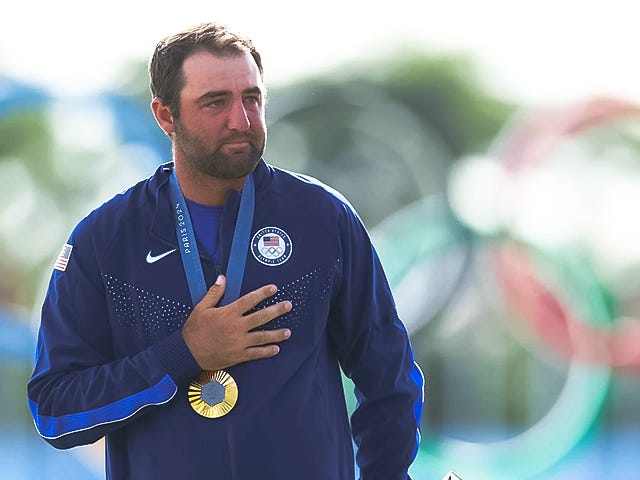
Wow. That might have been the best final nine holes of men’s professional golf this year. The only rival to it would be the U.S. Open finish. Scottie Sheffler stormed to a back nine 29 that included six birdies, four of those in a row starting at the 14th hole. He put on this charge while most around him melted under the pressure of playing for country.
Jon Rahm had a four shot lead before fading badly on the final holes to finish T-5. Xander Schauffele looked like he would repeat in winning the gold medal but faded to a T-9 finish. Tom Kim was playing to earn a medal that would exempt him from the compulsory military service requirement in his home country of South Korea but finished a disappointing 8th. Rory McIlroy stumbled on the back on his way to a T-5 finish.
Frenchman Victor Perez put on a Sunday charge riding the wave of enthusiasm provided by his fellow citizens on the grounds of Le Golf National to finish 4th. Tommy Fleetwood put on a fine performance in winning the Silver Medal while Hideki Matsuyama brought home the bronze.
The emotions of both the winners and the losers at the conclusion of the final round showed that these guys were motivated and playing for something more than money—they were playing for their country. It was fun to watch.
Read more from the PGA TOUR HERE.
Clips You Might Have Missed
Good start.
You have to release it, and then let it go.
Something spectacular from Rory.
And then something not so spectacular.
Update on the the selling of Gary Player’s Claret Jug replica.
Tour Backspin Quiz | Greater Greensboro Open Trivia
Sam Snead won eight Greater Greensboro Open titles. What was the year of his last win in the GGO and how old was he?
Scroll down for answer
Swing Like a Pro
The compact swing of Doug Sanders
Blind Shot
Click for something fun. 👀
Josh Sens of Golf.com writes about a golf ball that was found after being lost for about 100 years.
Bunkered shows you the driver that TaylorMade would make if there were no rules restrictions.
Tour Backspin Music Clip
The Lovin’ Spoonful, with two keyboards, performs, or at least lip syncing, “Summer in the City in 1966.
This biography of Tony Lema is one of the best golf books out there. Great research and writing. Highly recommended!
Bill via Instagram
Uncorked, The Life and Times of Champagne Tony Lema tells the story of one of the tour’s biggest stars in the mid-1960s. A fascinating glimpse into the traveling caravan that was the PGA TOUR during an era where the fields were full of “Mad Men” era personalities. From a hardscrabble youth spent on the “wrong side of the tracks” in the Oakland suburb of San Leandro, to the temptations of Elko, Nevada, to the bright lights of the PGA TOUR, Uncorked tells a story of determination, redemption and, above all else, a love story that documents how Betty, Tony’s new wife, provided the direction and motivation for him to become a top star. Order on Amazon.
Tour Backspin Quiz Answer:
Sam Snead won the 1965 Greater Greensboro Open, his eighth victory in the event. He was 52 years, 10 months, and 8 days old when he won becoming the oldest player to win on the PGA TOUR, which is still a record today.
Thank you for reading this far, I know your time is valuable and choosing to spend some of it on what I’ve created is gratifying. If you want to help support the work we’re doing, please consider upgrading. It’s just $36 a year and you’ll be helping to tell the stories from one of golf’s golden ages.
Vintage Ad
Final Thoughts
I LOVED those Wilson Staff irons in the Vintage Ad.
Did you see that TaylorMade driver in the Check It Out section? Wild.
Went on my annual golf buddies trip, and this year we went to Gearhart Golf Links and it was so much fun. Still working on writing a course review for paid subscribers of Tour Backspin. I’m almost there. Upgrade for special articles, videos, movie updates, and other fun stuff.





